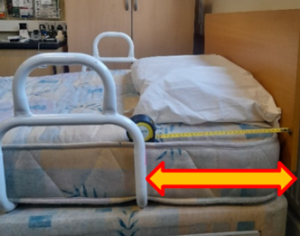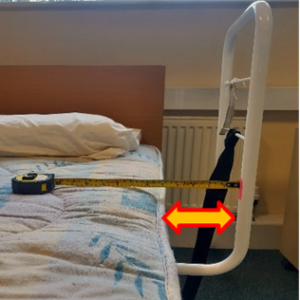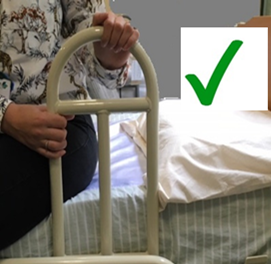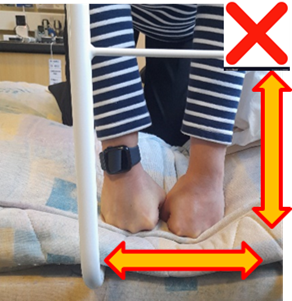Before you buy a bed grab handle, consider the points below
WARNING – this equipment can cause entrapment if not fitted correctly or if the person’s needs change. Always follow manufacturer’s fitting instructions.
For more information see: National Guidance: NatPSA/2023/010/MHRA
- If you are having difficulty getting in and out of bed or moving in the bed, ask a healthcare professional for advice
- Bed grab handle/levers can be used to help you move in bed and get in and out of bed
- All bed grab handles must be compliant with current legislation AND have full manufacturer’s fitting instructions
- Some bed grab handles are designed to be supported under the mattress and some clamp to the bed frame. Some are designed for static beds and some for beds with moving parts. The bed grab handle must be compatible with the bed and the mattress used.
- To avoid the risk of entrapment, all gaps between the fitted bed grab handle and the mattress, bed frame and wall, must be set according to manufacturer’s guidance and national safety guidance. See overleaf for examples of safe and unsafe fitting.
- TO REDUCE RISK OF ENTRAPMENT the fitting and safe use of the bed grab handle must be checked frequently, especially if there have been any changes in equipment or in the person’s condition.
Safe fit and safe use of bed grab handles will be affected by:
- Damage to the bed grab handle, or clamps and fittings that are faulty, rusty, loose, or missing, will make the bed grab handle unsafe to use
- Changes to the person’s health, strength, or mobility will affect their safe use of the bed grab handle
- A change of bed type will affect the bed grab handle choice and an alternative type of bed grab handle may be required
- A different type of mattress or an additional overlay will affect the gap sizes and could create an entrapment risk
- The bed grab handle moving out of position, may result in a gap appearing between the bed grab handle/lever and the side of the mattress and could create an entrapment risk
- The bed moving away from or closer to walls, or removing or replacing a headboard will affect gap sizes and could create an entrapment risk.
If you discover any damage, defects or problems operating the equipment, then you are advised to stop using the equipment and report it to the supplier.
If there are concerns about any entrapment risks, stop using the equipment.
FITTING BED GRAB HANDLES (for Adults) RISK OF ENTRAPMENT: NATPSA/2023/010/
WHEN FITTING A BED GRAB HANDLE, ALWAYS USE THE CORRECT BED GRAB HANDLE FOR THE BED TYPE AND FOLLOW MANUFACTURER’S INSTRUCTIONS
Fixing must be secure to avoid movement of grab handle away from the mattress which may introduce an unsafe gap
To ensure there are no unsafe gaps, check these 3 measurements
1 GAP between grab handle and the headboard/wall

2 Horizontal GAP between mattress edge and grab handle

3 Internal gaps within the bed grab handle


For more information see: national guidance https://www.gov.uk/guidance/bed-rails-management-and-safe-use#introduction